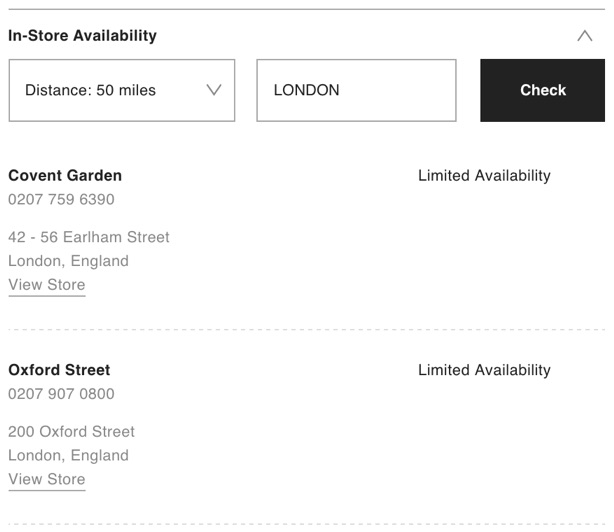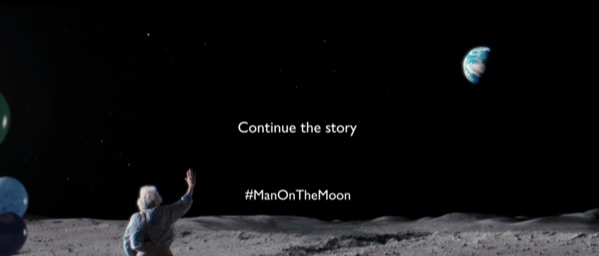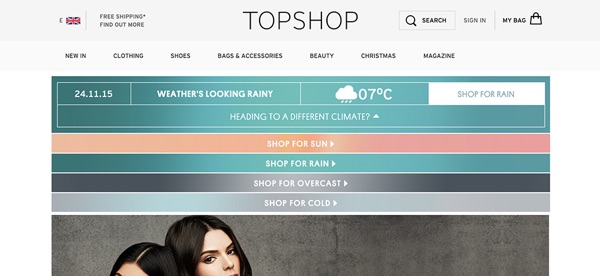To enhance user experience, most marketers try to talk to visitors in their own language and display perfectly tailored messages to them at the right time. But what is the perfect message? This is the tough part.
For personalization to be effective, you need to keep your messages consistent across all channels. So, one of the first things to look at when you attempt to achieve on-site relevance is the consistency of all channels of communication – off-site or on-site.
Visitors Want to Feel Unique
These days, in the age of the internet, brands can send broad messages out to thousands and even millions of people at the same time. But it can be difficult to achieve the much-desired personalized message that visitors want.
Let's take a basic example: Imagine that a retailer emails a promotional offer to drive people to its website. Visitors click on the offer and land on a specific page where they have to fill in a form to obtain a discount. So far, so good. But the form asks people for their email addresses again after the retailer just emailed them. Sure, there may be some technical reason for this, but users see a mismanaged brand that doesn't have its act together.
These kinds of mistakes ruin all your marketing efforts aimed at creating a strong and unique relationship with your visitors. The blunders may seem small to you, but to visitors, it's like being put on hold and then transferred half a dozen times.
And sometimes, it's little things that make a difference. When a member logs in to their American Express online account, they are greeted with a Good Morning, Good Afternoon, or Good Evening [name] depending on the time of day they log in.

People crave a personalized experience that makes navigation smoother. They want to feel as if the brand is talking to them as individuals, not as a homogeneous group of anonymous visitors. And, very often, all it takes is consistency.
Smart personalization and testing tools permit marketers to target people on very precise criteria (behavioral, contextual, etc.). Multi-page tests are particularly suitable for achieving consistency. They allow for adding different elements or content along a specific path, such as “Free Delivery” in a banner on the homepage and subsequently in a box on the product page.
There are a lot of possibilities, so all you need to do is find the right ideas and build the hypothesis.
Consistency between Off-Site and On-Site Messages
Ignoring the bonds between off-site and on-site messages ultimately leads to a lack of consistency and, even worse, poor user experience. Off-site messages take many forms on many channels, such as advertising, communication on social media, email, or even in-store messages. And all these messages are part of on-site traffic acquisition.
The customer journey can start offline and end online and, conversely, lots of visitors use websites as information channels, then bounce, but convert in-store. One more reason to remain consistent!
Here are a few ideas to help you build a first-class user experience:
1. Consistency in Design
Brand identity must be recognizable at first glance on all channels so that visitors will know they are engaging with the same company, regardless of channel. This means that all graphic elements, such as fonts and colors, have to be harmonious. Logos or slogans must be visible, as they trigger brand recall. It is well known that design often promotes a message as much as text does.
Color, for example, increases brand recognition by 80%, and “brand recognition directly links to consumer confidence.” A true statement, provided that colors are consistent across channels!
Apple is a great example of this. Their classic silver color is in more than just their products. It's used on their website and in their offline stores. So, when you're dealing with Apple, you know it, whether it's an advertisement, a product, a website, or a physical store.
2. Consistency in Offers
Online and offline offers must be consistent, as lots of visitors don't convert online but in-store. Channel-specific offers are likely to disappoint potential buyers, unless there is a strategic reason to make them available on only one channel.

In addition, channel-pairing provides marketing campaigns with greater reach. Consistent marketing campaigns, such as a hashtag on a TV advertisement to drive people to social media, helps increase the mere-exposure effect and enlarge the audience.

3. Consistency in Messages and Interactions
Taking user behavior into account is the essence of useful personalization. Examining the visitor journey and interaction with the website partially reveals intent and expectations. Personalization should tap into these expectations to make navigation more relevant and less repetitive.
For example, asking for the same information twice degrades the user experience. It makes the conversion funnel longer, adds no value for the business, and ruins your efforts toward building a unique relationship. On the contrary, making use of enriched data to personalize forms represents an opportunity to end anonymity. The more you know about your visitors, the easier it is to target them and nudge them toward final conversion.
A/B testing tools offer a myriad of criteria for personalizing and for tailoring your website to visitors' profiles. These criteria include types of pages visited, time spent, basket amount, etc. You can base triggers on specific behavior (e.g., more than a certain amount in the cart) in real time, which makes the personalization especially accurate.
4. Consistency in Messages and Context
In addition to behavior and user interaction, contextual criteria, such as weather and location, can be highly relevant in personalization. Contextual data are easier to obtain than profile data, as the latter requires visitor actions. Weather-based personalization can help make content particularly current. For example, highlighting the fact that the sun will be shining for the next two days while promoting sunglasses, is consistent with the product's purpose and creates a sense of relevance.

Conclusion
Cross-channel consistency is not about replicating the same shapes and messages on all channels, but rather about identifying complementary content and designs to achieve a coherent and harmonious journey.
Consistency is necessary to build a seamless and personalized on-site journey. Improving consistency through personalization is a simple and efficient way to increase conversion rates at no extra cost (provided that you have a personalization tool, of course).
About the Author: Rémi Aubert is Chief Executive Officer at AB Tasty, a company he co-founded in 2009 to help marketers increase conversion rates and user engagement through A/B testing, personalization, and marketing automation. With more than 2,500 customers worldwide and offices in London, Paris, Madrid, Cologne, and Sydney, AB Tasty proudly leads the European conversion rate optimization market.
No comments:
Post a Comment